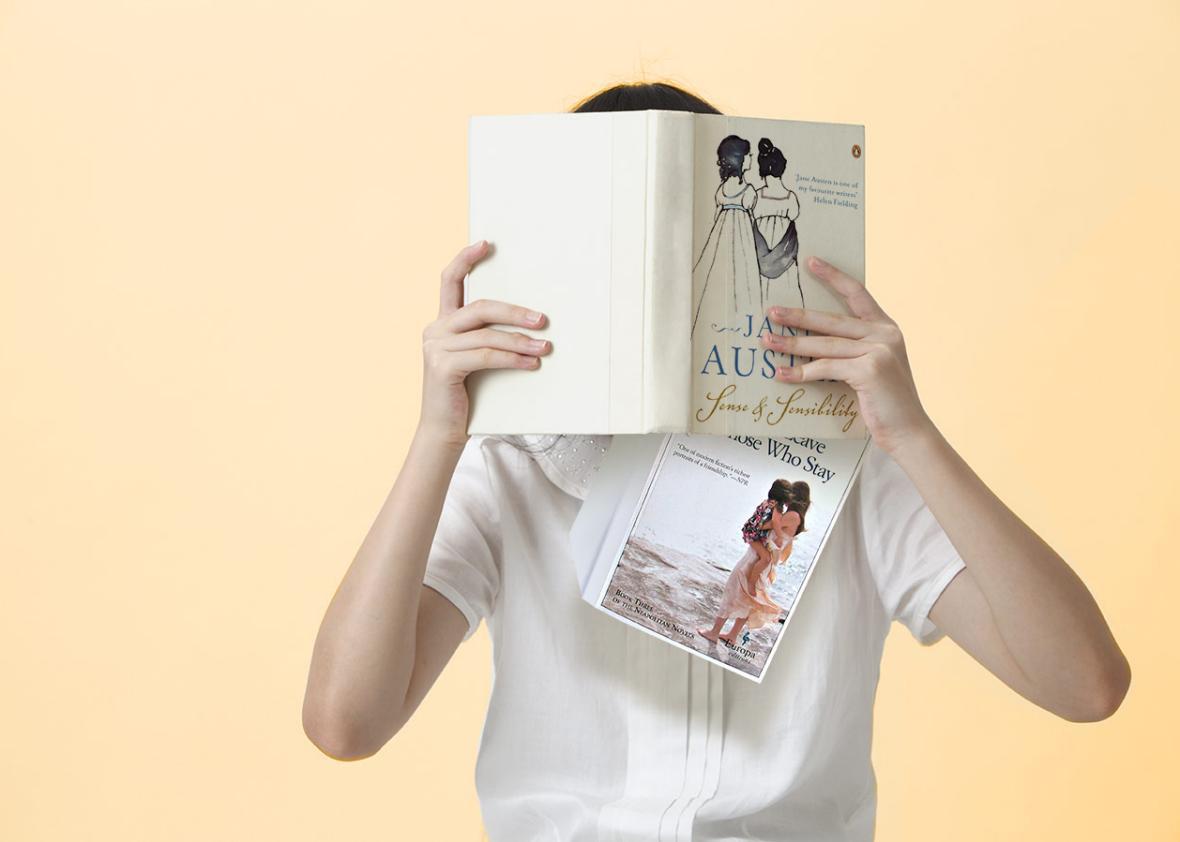Elena Ferrante—the mysterious Italian writer whose Neapolitan novels have captivated the literary world with their portrait of a lifelong female friendship—has been asked many times why she keeps her identity private. She has responded with many variations on the answer that she gave Vanity Fair this summer: “My books increasingly demonstrate their independence … for those who love literature, the books are enough.”
Ferrante, who publishes pseudonymously and does not tour to promote her books, has always hinted at practical considerations that guided her decision. She values her privacy and hates the social circus of the literary world. But she has also gestured toward a belief that her “absence” adds a layer to her art. (Ferrante rejects the description of herself as “anonymous” because her books are signed, though with a fabricated name.) As she told the Paris Review, “If the author doesn’t exist outside the text, inside the text she offers herself, consciously adds herself to the story, exerting herself to be truer than she could be in the photos of a Sunday supplement, at a book launch, at a literary festival, in some television broadcast, receiving a literary prize.” In an email exchange with the New York Times, she reiterated, somewhat enigmatically: “The structural absence of the author affects the writing in a way that I’d like to continue to explore.”
Now, we may have gained a key to exactly what Ferrante means from an unexpected source: a new introduction she wrote for a Folio Society edition of Jane Austen’s Sense and Sensibility. When Ferrante fell in love with Austen’s novels in her 20s, she writes, “I was passionate about her anonymity.” The original readers of Sense and Sensibility were told only that it was “by a lady.” Which leads to the central, somewhat magical question of Ferrante’s short piece: “Who wrote Sense and Sensibility? … Was it Jane Austen or, simply, a lady?”
Ferrante answers by examining the novel’s heroine, Elinor, whom she argues has both “sense”—prudence—and “sensibility”—passion. When Elinor’s sister (and some readers) accuse her of being without sensibility, they have misunderstood the way she channels herself into observation rather than ego. She intentionally reins in the uglier emotions that swirl around female competition for husbands and status, even as she, too, “wants love … aspires to happiness and happiness is marriage.” Ferrante describes the outcome of this self-control as a virtuous self-effacement: “Elinor hides Elinor in order to become better than Elinor.”
Austen, Ferrante tells us, accomplished the same impossible balancing act. By writing anonymously, she created a “lady-narrator” who is both a part of the world of women she describes—elegant and educated yet utterly powerless, vying for the husbands on whom their futures depend—and a dispassionate observer of that world. And this, Ferrante suggests in a sentence that could describe her own work as easily as Austen’s, gives her the power to write with a tonal deftness that lifts her material to the level of art: “The lady-who-writes can set aside dissatisfaction and bitterness, spread a light, ironic glaze over the old world that, with its wrongs, is collapsing and the new world that is emerging, with its abundance of new wrongs. But pay attention, for the lightness conceals pitiless depths—it’s a glaze that, miraculously, doesn’t sweeten anything.”
The Neapolitan novels contain this same “light, ironic glaze” over “pitiless depths.” Consider the condition that plagues the character Raffaella Cerullo (called Lila), which she refers to as “dissolving margins”: “[T]he outlines of people and things suddenly dissolved, disappeared … she had perceived for the first time unknown entities that broke down the outline of the world and demonstrated its terrifying nature.”
Lila’s episodes can be read as both a mysterious nervous condition and a profound insight into the nature of her rapidly shifting 20th-century world. Ferrante explores them through the lens of her narrator, Lila’s friend Elena Greco, who in turn sees them through the refractions of her endlessly complex—and envious—fascination with her counterpart. This distance enables both Elenas to write about the theme of “dissolving margins” in a way that is never overwrought, but instead penetratingly precise—revealing a problem that is metaphysical rather than sentimental.
The need to create a more capacious authorial persona is, Ferrante implies, especially urgent for female writers. At the beginning of the introduction, she admits that as a teenager, she didn’t care for Austen. “I was enthralled by the great male adventure novels, with their stories that ranged all over the world, and I wanted to write such books myself: I couldn’t resign myself to the idea that women’s novels were domestic tales of love and marriage.” Ferrante’s own heroines do travel, and engage in the highest order of political and intellectual disputes—Lila and Elena are swept up in the socialist protests of 1968, and in the early days of the feminist movement. But their dramas are also, essentially, domestic. Like Austen’s novels, Ferrante’s are, on at least one fundamental level, a study of good and bad marriages and how they determine women’s fates. She gives her characters’ lives, and their interior selves, the exigency of an adventure story by writing about them with a corresponding velocity.
Ferrante suggests that for Austen to accomplish this, she had to invent a version of her own consciousness that transcended the limitations of her life as a woman born in the 18th century; Austen could not write with “a clear gaze” about her social confinements while trapped within them. A woman like Austen—and perhaps, for all we know, like Ferrante, too—was probably forced to steal time to write in “a common room, a space not hers,” and to “hide her pages” whenever someone came in. Ferrante describes the lady-writer flickering into being in the brief moments when Austen felt free, disappearing at the first threat from “the disorderly world of the everyday”—the real life of the real and limited Jane.
